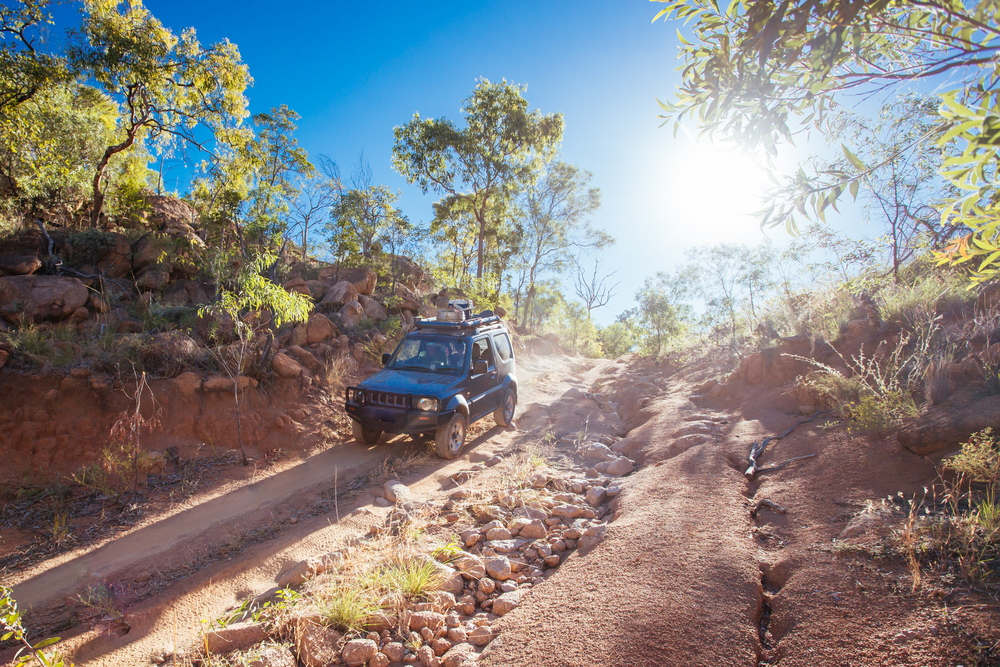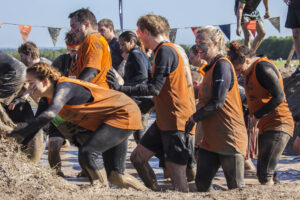
A 4WD car negotiating a rural track in the outback near Mt Surprise, Queensland, Australia
With its ability to convey and share personal experiences, anecdotes and images worldwide tens of thousands of times, social media encourages visitors to Australia, and for the more adventurous, to the Aussie outback.
Struggling small town, drought-stricken economies in outback Queensland were helped in 2015 by an informal campaign. The brainchild of Longreach photographer and gallery owner Debbie Scott, she posted a photograph of limitless blue sky, brown earth and a stationary herd of Brahman cattle with the slogan Stay a night, spend a dollar.
At the time, there was also a group focussed on whether billboards with the same message could be erected in the region, in the hope that if local communities were on board, it was possible local government would become involved and auger its success.
It was her community response to the then statistics that showed businesses closing within a month if tourism didn’t improve. Travellers looked to help distressed townships too; they still wanted to visit, and the idea was that if everyone thought like that, then there was a feeling of personal support for small business.
Notably for Scott, grey nomads seemed the driving force behind the recovery: when they saw the social media post, almost all decided to buy meals and refreshments from the towns they were in, rather than staying in their caravans and mobile homes utilising their own supplies.
And they of course, spoke about it to friends and fellow travellers.
The Outback Queensland Tourism Association (OQTA) supported any measures at the time to entice visitors out west; all of the region’s natural and man-made attractions were open and operational, despite the drought conditions.
Data showed that those who travelled to the region spent less, and that was summarily associated with a downturn in the mining industry and reduction in the arrival of FIFO workers. It accounted for an overall expenditure decrease of approximately 6% over 3 years.
The National Visitor Survey indicates that each year, around 400,000 people visit the outback, bringing an average annual spend of $AU250 million, or $AU625 a head.
Very few people would ask what could possibly be appealing about 4WD tours in the middle of the Australian outback because the answer has to be “Everything!”
Whether you want to explore and find some connection with the world’s oldest culture, experience the sight of remote ochre coastlines meeting a sapphire sea, or simply be in the expanse of the raw, unchanged and ancient heart of Australia, there is continual growth in tourism. With it comes people and new perspectives in the drive to express the utter thrill of overwhelming beauty, and social media provides the perfect medium for that.
Travel industry social media strategies have ensured that the biggest social networks – Facebook, Twitter and Instagram – have travel and tourism as one of the most shared topics: whether it be upcoming plans, requesting advice and offering tips, or memories of experiences. Word-of-mouth has always been the most effective form of marketing because people believe, or buy, from wherever they find their place of trust. Whether that be represented by a brand, a blog or shared belief, social media doesn’t have the feel of advertising – even if it is.
Travel research, sharing destination discoveries, recommendations, and feedback (positive and negative) have changed the landscape of marketing tourism forever. Not only does almost all personal planning, research and bookings happen online, but sites like TripAdvisor attract 400 million users.
That’s a whole lotta input and info in a world that is indicates a growing preference for increasing personal experiences, over the idea of owning the tangible and material.
Even if you’re not one to ever post anything, it’s an excellent resource and is a major factor in improved customer service. Questions, comments and concerns can be found and offered in a single place, a commercial Facebook page for instance; or distributed widely throughout a numerous relevant sites. At least 1-in-2 posters expect a reply to their positive comments from a branded service or product page and that increases to 75% when a complaint is made.
So where, exactly is the outback, as it rolls across Queensland, the Northern Territory, South Australia and Western Australia? Whilst it is certainly a mapped and geographical location, it is, more than anything, a state of mind where spirit soars, freedom takes over, and the only thing you find you’re without is mobile reception.







